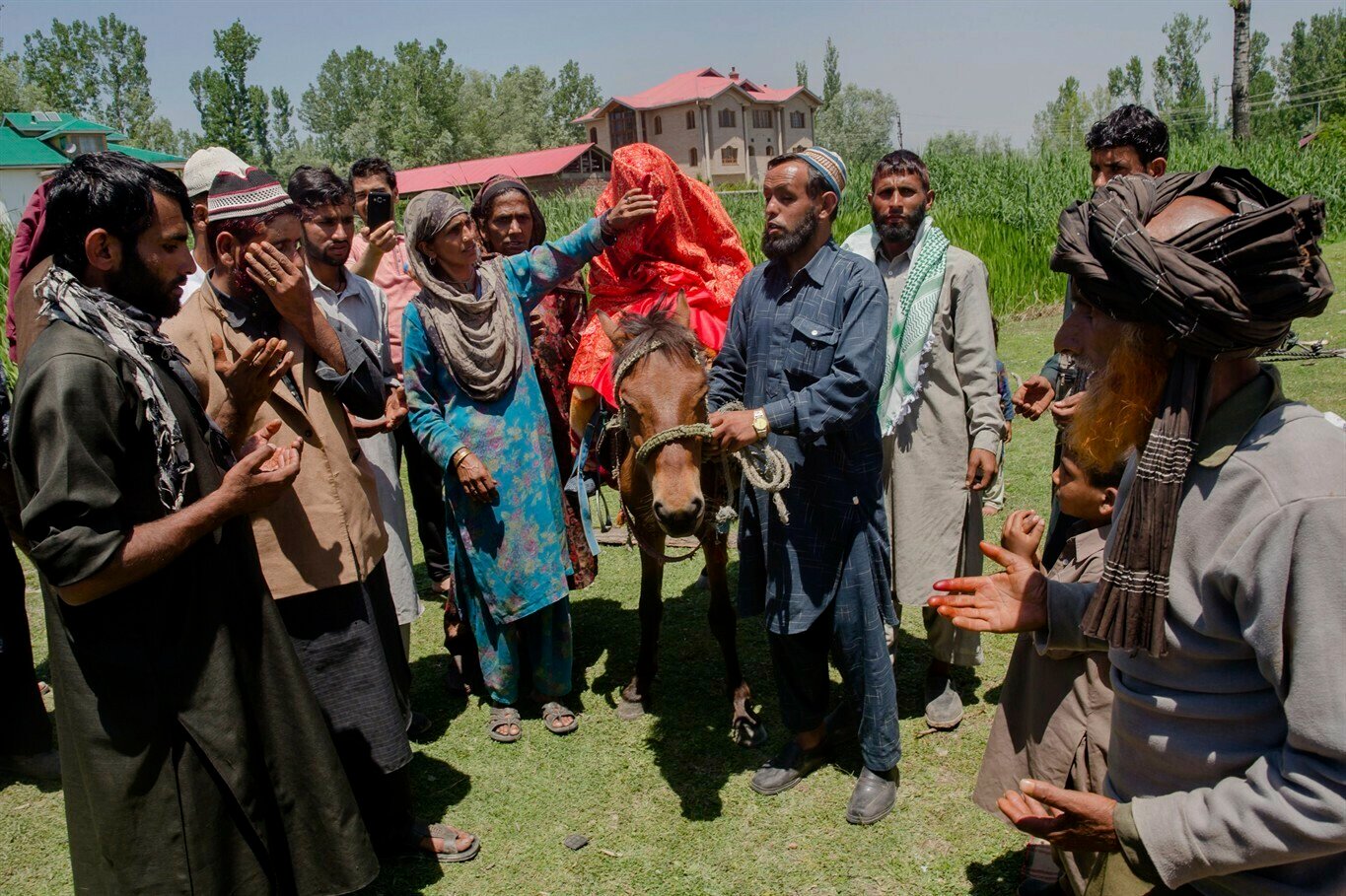By Dr Naazir Mahmood
After my two columns on Kishwar Naheed and Fahmida Riaz, this article deals with Empress Nur Jahan. Why, you might ask. You will get the answer to this question at the end of this article.
That history is a male-dominated discipline is quite obvious. The history of the Subcontinent is no different. It is about men, for men, and mostly written by men. In the entire history of this region, not many outstanding women have been written about. Razia Sultan, Nur Jahan, Chand Bibi, Zeenat Mahal, Hazrat Mahal, and the Rani of Jhansi are a few names that come to mind.
But not much has been written about other prominent figures, such as Gulbadan Begum, Jahan Ara Begum, and Zebunnissa. Even these women require the mention of a male relative to help us place them properly. For example, Nur Jahan is mostly known as the favourite wife of Emperor Jahangir. Zeenat Mahal is only mentioned with reference to Bahadur Shah Zafar. Any mention of Hazrat Mahal carries a reference to Nawab Wajid Ali Shah. For Gulbadan Begum, you need to clarify that she was the daughter of Emperor Babur and Humayun’s sister, even though she was a writer in her own right and penned ‘Humayun Nama’.
Similarly, for Jahan Ara Begum (the author of ‘Moonisul Arwaah’) and Zebunnissa Makhfi (an accomplished poet), you need to mention that they were daughters of emperors Shah Jahan and Aurangzeb, respectively. During the past few decades, some female historians have contributed towards writing history from the perspective of women. Rekha Misra from the University of Allahabad wrote her seminal work, ‘Women in Mughal India (1526-1748)’; Renuka Nath penned ‘Notable Mughal and Hindu Women in the 16th and 17th centuries AD’; and Afshan Bukhari wrote a doctoral dissertation titled ‘Jahan Ara Begum’s patronage, piety, and self-representation in 17th century Mughal India’.
From Punjab University, Rukhsana Iftikhar’s ‘Cultural Contribution of Mughal Ladies’ has contributed to our understanding of the role of women in the Mughal period. Ruby Lal, an eminent historian of Mughal India, has recently written a few articles and books that present history from a feminist perspective.
Ruby Lal’s ‘Historicising the Harem: The challenge of a princess’s memoir’, ‘Domesticity and power in the early Mughal world’ and ‘Coming of Age in Nineteenth-century India’ have attracted attention from readers interested in history. Now, her new book titled ‘Empress: The Astonishing Reign of Nur Jahan’ is another addition to the scholarly work on women’s history.
Nur Jahan was not only the royal consort of Emperor Jahangir, but also a decision-maker and a co-sovereign whose name appeared on the coins issued during Emperor Jahangir’s reign. I had a few books on Nur Jahan in my collection. But I found Ruby Lal’s book to be the most scholarly and easy-to-read. The problem with most academic work is that it becomes tedious for general readers. That is one of the reasons Nasim Hijazi becomes a bestseller in a country like Pakistan, even though his pseudo-history is more fictitious than historical.
In Pakistan, Dr Mubarak Ali has tried to break the tradition of concocting history to serve nationalistic and religious purposes. His books have presented a non-official version of history in Pakistan – and that too in Urdu so that even students at public-sector educational institutions can benefit from them.
Ruby Lal has delved deeper into the original sources of Mughal history – from ‘Tuzk-e-Babri’ and Gulbadan Begum’s ‘Humayun Nama’ to Abul Fazl’s ‘Akbar Nama’ and Emperor Jahangir’s ‘Tuzk-e-Jahangiri’ – as any good book on Nur Jahan has to start with some background on Afghanistan, Central Asia, and India during the 16th century.
Most original sources have scant or no mention of women. Therefore, Ruby Lal had to dig deeper to present an authentic milieu where Nur Jahan not only flourished but also left a deep impact on other women. The portrait of Nur Jahan that emerges is very different one from what our films have projected. In films such as ‘Anarkali’ and ‘Mughal-e-Azam’, the Mughal period is shown as an era where women merely danced, loved, sang, and gave birth to royal children. Nur Jahan was a very different woman. She not only excelled at hunting and shooting, but also gained management experience while her first husband Sher Afgan was posted in Bengal.
Her experience in Bengal stood her in good stead when she became the Mughal empress and ruled over India. Ruby Lal clarifies that most history books about this period haven’t done justice to this outstanding woman who was a co-sovereign for almost 15 years – the longest period that any woman ruled over India till Indira Gandhi became prime minister in 1966 and died in 1984 after a 17-year rule over three terms with a break. Razia Sultan ruled over Delhi just for four years (1136-1140).
Nur Jahan’s significance lay in her ability to take over whenever her husband was in poor health. This was the case during most of his rule. Some historians have projected Nur Jahan as a vile and manipulative woman who conspired against other senior members of Jahangir’s court. Ruby Lal highlights the fact that Nur Jahan had to stand her ground with other nobles and commanders of the Mughal Army. It was not an easy task to accomplish. While Nur Jahan did manipulate courtiers, she managed to do so because of her charisma and abilities. If this wasn’t the case, other women could have toppled her.
It was Nur Jahan’s sheer brilliance in managing state affairs that enabled her to successfully deal with challenges for so long. There were many years of uncertainty and constant bickering among Mughal princes. There were rebellions and outright revolts in various parts of the Mughal Empire. With Jahangir’s health on the decline, it was Nur Jahan who took most of the decisions. It is rather unusual for a queen to have coins minted in her name while her husband was still alive. But it was Emperor Jahangir who approved this decision and showed the world that he had complete confidence in his wife and co-sovereign, Nur Jahan, who had proved that her role was exemplary.
One of the most interesting chapters in Ruby Lal’s book is the account she gives of Jahangir’s abduction by his general Mahabat Khan. Nur Jahan embarked on the challenge to rescue her husband. With a combination of courage and coaxing, she managed to ensure her husband’s release. Her relations with her brother Asaf Khan were strained when he tried to install his son-in-law, Prince Khurram, as the new emperor. Nur Jahan wanted to appoint her own son-in-law as the emperor. She failed in her endeavours and Prince Khurram became Emperor Shah Jahan after the death of his father, Emperor Jahangir.
Though Ruby Lal’s book is well-researched, with appropriate and detailed references, one reference was completely out-of-place. In reference number eight on page 253, she cites Saadat Hasan Manto’s ‘Nur Jahan: Sarur-e Jahan’. Manto’s ‘Nur Jahan: Sarur-e- Jahan’ has nothing to do with Empress Nur Jahan. It is about film actress and singer Noor Jahan. Readers must be wondering why this week’s article deals with this particular aspect of the Subcontinent’s history. This writer would like our girls to learn from the likes of Kishwar Naheed, Fahmida Riaz, Nur Jahan, Gulbadan Begum, Jahan Ara Begum, Zebunnissa, and many others who have been marginalised and overlooked in history.
The marginalisation of women persists and will go on until history is rewritten and some of our remarkable women are given the attention and respect that they deserve.





